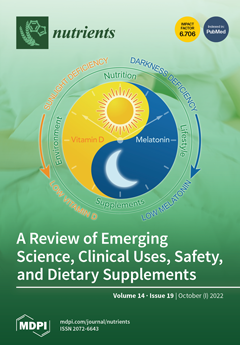Optimal energy provision, guided by measured resting energy expenditure (REE) and determined by indirect calorimetry (IC), is fundamental in Intensive Care Units (ICU). Because IC availability is limited, methods to predict REE based on carbon dioxide production (VCO
2) measurements (REE
VCO2) alone have been proposed as a surrogate for REE measured by IC (REE
IC). The study aimed at externally and internally validating the accuracy of the REE
VCO2 as an alternative to REE
IC in mechanically ventilated children. A ventilator’s integrated gas exchange module (E-COVX) was used to prospectively measure REE
IC and predict REE
VCO2 on 107 mechanically ventilated children during the first 24 h of admission. The accuracy of the REE
VCO2 compared to REE
IC was assessed through the calculation of bias and precision, paired median differences, linear regression, and ROC analysis. Accuracy within ±10% of the REE
IC was deemed acceptable for the REE
VCO2 equation. The calculated REE
VCO2 based on respiratory quotient (RQ) 0.89 resulted in a mean bias of −72.7 kcal/day (95% limits of agreement −321.7 to 176.3 kcal/day) and a high coefficient of variation (174.7%), while 51.4% of the calculations fell outside the ±10% accuracy rate. REE
VCO2 derived from RQ 0.80 or 0.85 did not improve accuracy. Only measured RQ (Beta 0.73,
p < 0.001) and no-recorded neuromuscular blocking agents (Beta −0.13,
p = 0.044) were independently associated with the REE
VCO2−REE
IC difference. Among the recorded anthropometric, metabolic, nutrition, or clinical variables, only measured RQ was a strong predictor of REE
VCO2 inaccuracy (
p < 0.001). Cutoffs of RQ = 0.80 predicted 89% of underestimated REE
IC (sensitivity 0.99; specificity 0.89) and RQ = 0.82 predicted 56% of overestimated REE
IC (sensitivity of 0.99; specificity 0.56). REE
VCO2 cannot be recommended as an alternative to REE
IC in mechanically ventilated children, regardless of the metabolic, anthropometric, or clinical status at the time of the evaluation.
Full article






